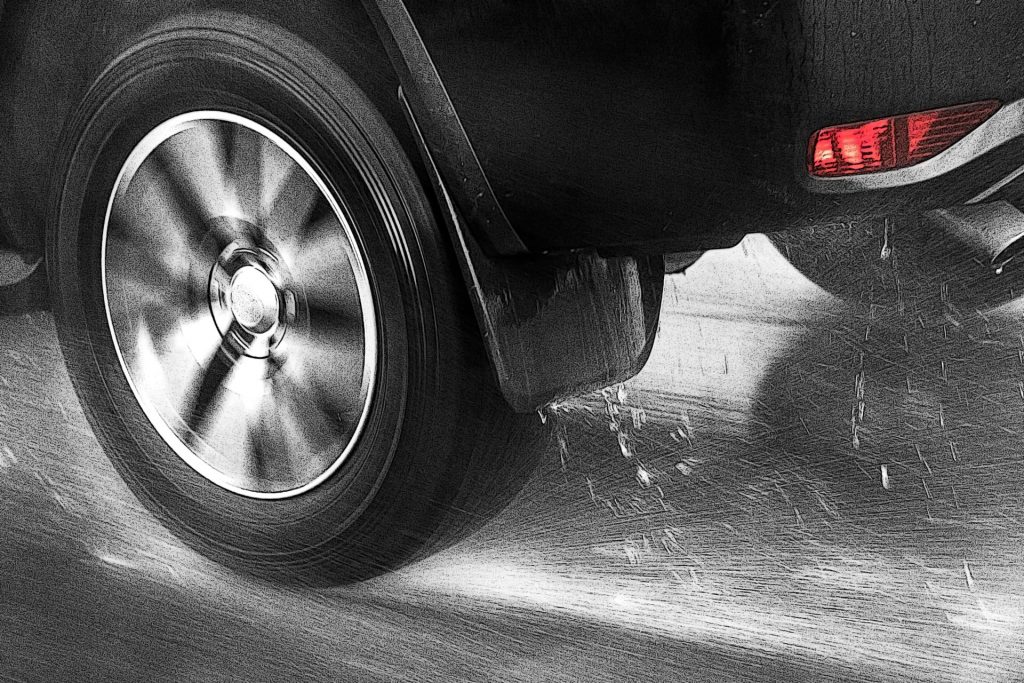How to reduce your chance of a skid
Every time you get behind the wheel of a vehicle, you are likely to make at least a few mistakes. Driving is a complicated task that involves watching for many different factors such as road conditions, weather and anything else that might affect safety on the road. One of the dangers that is especially prevalent in winter, but also in certain summer conditions, is the possibility of skidding.
Sometimes, skids are very brief and involve only a minor adjustment to return the vehicle to its correct path, but others can be more dangerous and difficult. Drivers should learn how to recover from a skid, but prevention is often just as important as knowing what to do after a skid occurs. No one can prevent all skids because of the many factors that contribute to these incidents. However, learning some of the techniques for maintaining control over a vehicle can help drivers to reduce the chances of a skid and keep the roads safer for everyone.
Four Tactics for Avoiding Skids
The Canadian Automobile Association of South Central Ontario lists four basic techniques for reducing the chances of a skid. The first is to slow down in response to road conditions. Even the clearest summer roads can have hazards such as water or gravel on the pavement, but winter holds the dangers of ice and snow. Intersections can be especially hazardous with vehicles braking and accelerating.
A new snowfall can be an especially dangerous time for skidding, especially in the first few hours. In most cases, workers come out quite soon after a snowfall to spread sand and salt on the roads to help prevent skidding, but drivers should still be especially careful not to take chances while the snow is still new. Some streets could still have large patches of ice and snow that can cause vehicles to skid. When the driver brakes or accelerates, the wheels might not grip the road properly, and the vehicle can begin to skid.
The second technique that the Canadian Automobile Association recommends is to anticipate any changes in direction on the road, such as curves, turns and lane changes. For this tactic, drivers should be sure to look ahead as far as possible rather than looking only at the immediate surroundings. Although this technique is much easier on a long straight road than on a road with frequent curves and hills, drivers should look ahead as far as they reasonably can to anticipate what is coming. Signs at the side of the road indicating upcoming curves or corners are also very helpful in this regard.
Braking often makes vehicles vulnerable to skidding. Allowing the vehicle to slow down gradually to the right speed for a curve, turn or lane change can help avoid the need for abrupt alterations in speed that can cause skidding. While slowing down, however, drivers should be sure that they do not impede traffic or cause other problems unnecessarily. As much as possible, drivers should keep up with other traffic unless that would cause additional danger.
Moving into the correct lane and signalling as early as is feasible can help alert other road users to a change in speed. If a driver begins to slow down in the middle of the road before changing to the correct lane for a turn, for example, it may confuse or frustrate other drivers, who may decide to pass at dangerous points on the road. Braking suddenly to avoid a car or truck that is blocking access to a turn can easily cause a vehicle to skid, but preparing in advance for these turns can help drivers avoid abrupt stops that could cause skids.
Smooth and precise steering with the hands at the nine and three o’clock positions can also help drivers to keep their vehicles under control. Drivers need to be able to handle curves and other directional changes without taking their hands off the wheel unnecessarily or needing to correct steering errors if possible. Although it can take some time to develop the skills to steer smoothly, drivers can practice in places where they are unlikely to impede traffic, such as in empty parking lots.
Winter tires are a third tactic for preventing skidding. All four wheels should have winter tires once the temperatures are consistently below seven degrees Celsius. This will give the vehicle better traction than it would have with all-season tires. In spring, it may be difficult to judge when it is safe to switch winter tires for summer ones, while early fall snowstorms might surprise vehicle owners. However, vehicle owners can use both their own judgement and the recommendations of local experts to decide on the best time for making the change.

The fourth guideline for preventing a skid is to avoid depending on the technology in the vehicle to compensate for errors or reckless driving. Anti-lock brakes, for example, can be useful in helping drivers stop quickly in an emergency, such as when another road user suddenly crosses a driver’s path. However, features like this lose many of their benefits if drivers fail to slow down in time for a red light or stop sign. Using caution and good driving techniques is still necessary for preventing skids.
Factors that Contribute to a Skid
Several factors can contribute to a skid, as the Government of Alberta’s Driver’s Guide to Cars and Light Trucks explains. The first factor is the surface of the road. Gravel or dirt roads tend to have less traction than asphalt, while ice, snow and water on the surface of an asphalt can cause wheels to lose their grip on the road. Oil and other fluids from passing vehicles can also become slippery patches on the road. Taking extra care when the road surface is compromised can help drivers avoid skidding.
Speed is another factor in skidding. Driving too quickly for the conditions can cause a vehicle to lose traction and to begin to skid. Excessive speed also leaves drivers with less time for reacting to hazards on the road, and they are more likely to brake abruptly when they are travelling too quickly.
Turning is another factor in the likelihood of a skid. Often, the speed of the vehicle is also a factor in this move, since the forces pushing outward on the vehicle as it moves can also cause it to skid if the driver turns too quickly for the angle of the corner. Often, it can take drivers time to learn the best speed for each type of corner, and even then, mistakes are common. However, experience can help drivers to make the right choices in these cases.
The condition of the tires can also affect a vehicle’s tendency to skid. Treads that have worn down or tires that are underinflated or overinflated can affect traction on the road, and drivers may fail to account for these factors when they turn, brake, accelerate, or change lanes. Vehicle owners should be sure to check the tires regularly to ensure that they are in good enough condition to perform their function effectively.
Driver Error
Often, if not most of the time, driver error is a major factor in skids. Failing to adjust speed for the conditions on the road, especially in icy or snowy weather or on mud, is a frequent cause of skids. Turning the steering wheel too sharply, especially for the speed at which the vehicle is travelling, can cause the momentum of the vehicle to push it into a skid. Because of this factor, drivers should be especially careful of their speed at any point when they are changing directions, whether that involves a minor lane change or turning a sharp corner.

Besides turns, the two elements of driver error most likely to cause skids are braking or accelerating too quickly. When drivers brake abruptly, the momentum of the vehicle will continue to carry it forward, sometimes causing the back of the vehicle to slide ahead as the front slows down. The fishtailing motion of the back of the vehicle can also be problematic in this case. Rapid acceleration can also cause the back of the vehicle to swing back and forth and the wheels to skid.
Unfamiliar Roads
Taking extra care on unfamiliar roads is an important element of avoiding skids. Many roads may look smooth and clear but have unexpected soft or slippery patches that drivers learn to avoid. A newcomer, however, is unlikely to know where these spots are or to be able to tell when the posted speed limit is too fast for the conditions. Even a familiar road can change due to weather conditions or other factors, but unfamiliar roads can be especially hazardous for drivers.
How drivers recover from skids can also affect the likelihood of losing control of the vehicle in another situation. Someone who tends to jerk the steering wheel to try to counteract a skid is less likely to have the kinds of safe driving habits that would help in other situations. However, drivers who cultivate the ability to respond calmly and carefully to the situations they encounter are more likely than others to be able to avoid skidding.
Driving in a manner that avoids skids is difficult, and it can take time and effort to learn the necessary techniques. However, all drivers should know what to do in these situations and be able to deal with the loss of vehicle control on the road. With care, drivers can reduce their chances of a skid and learn to control their vehicles more fully.
